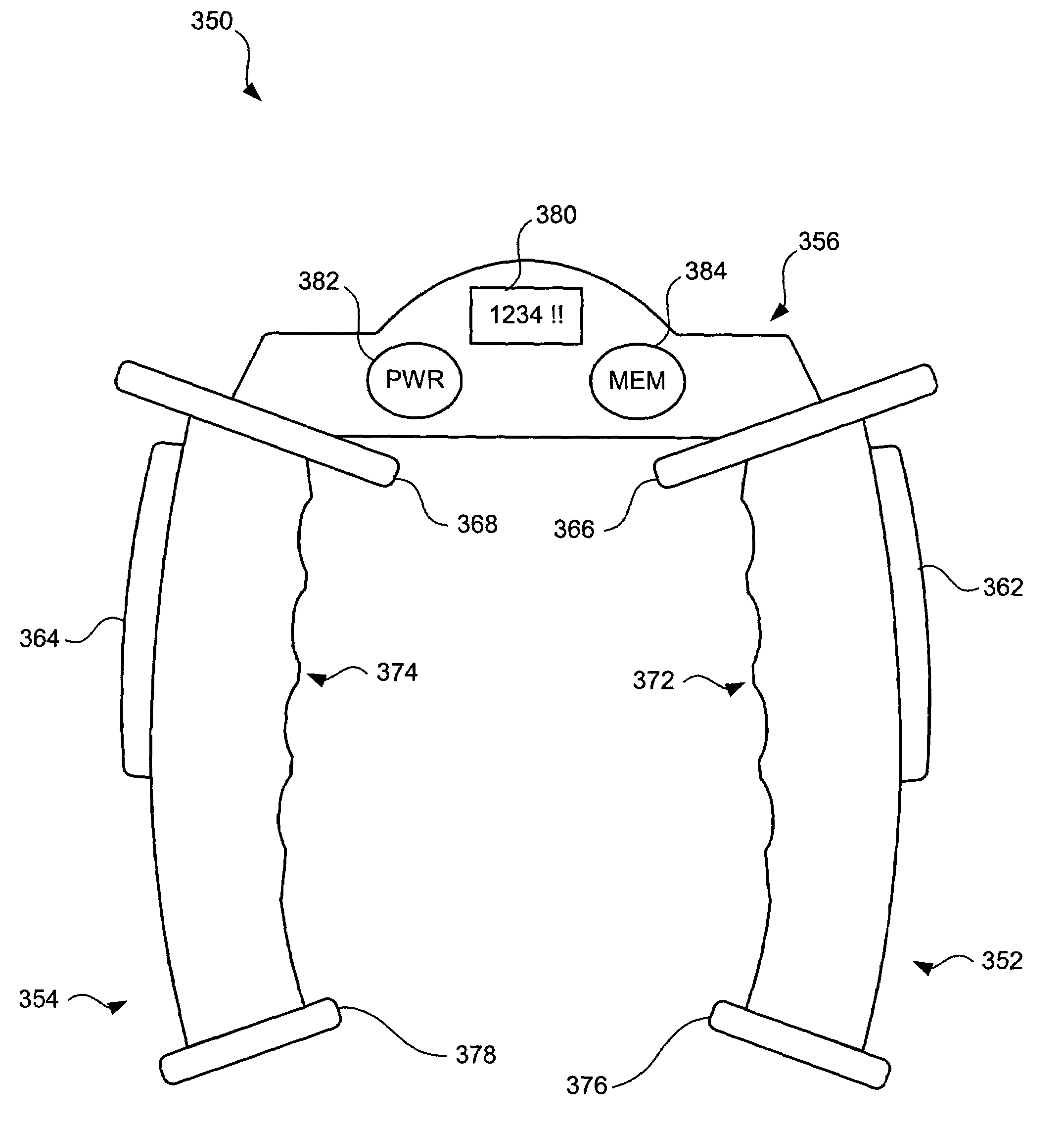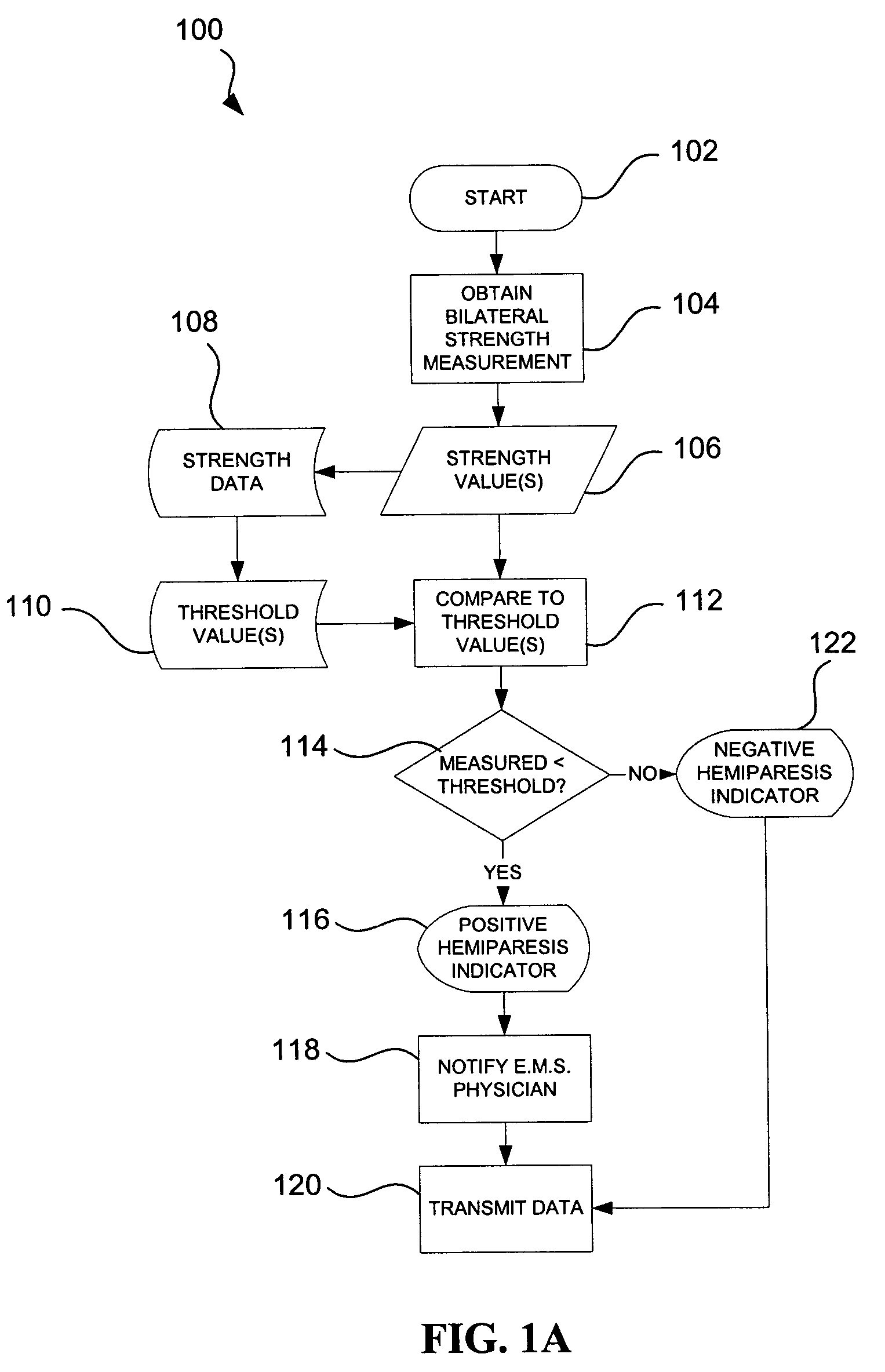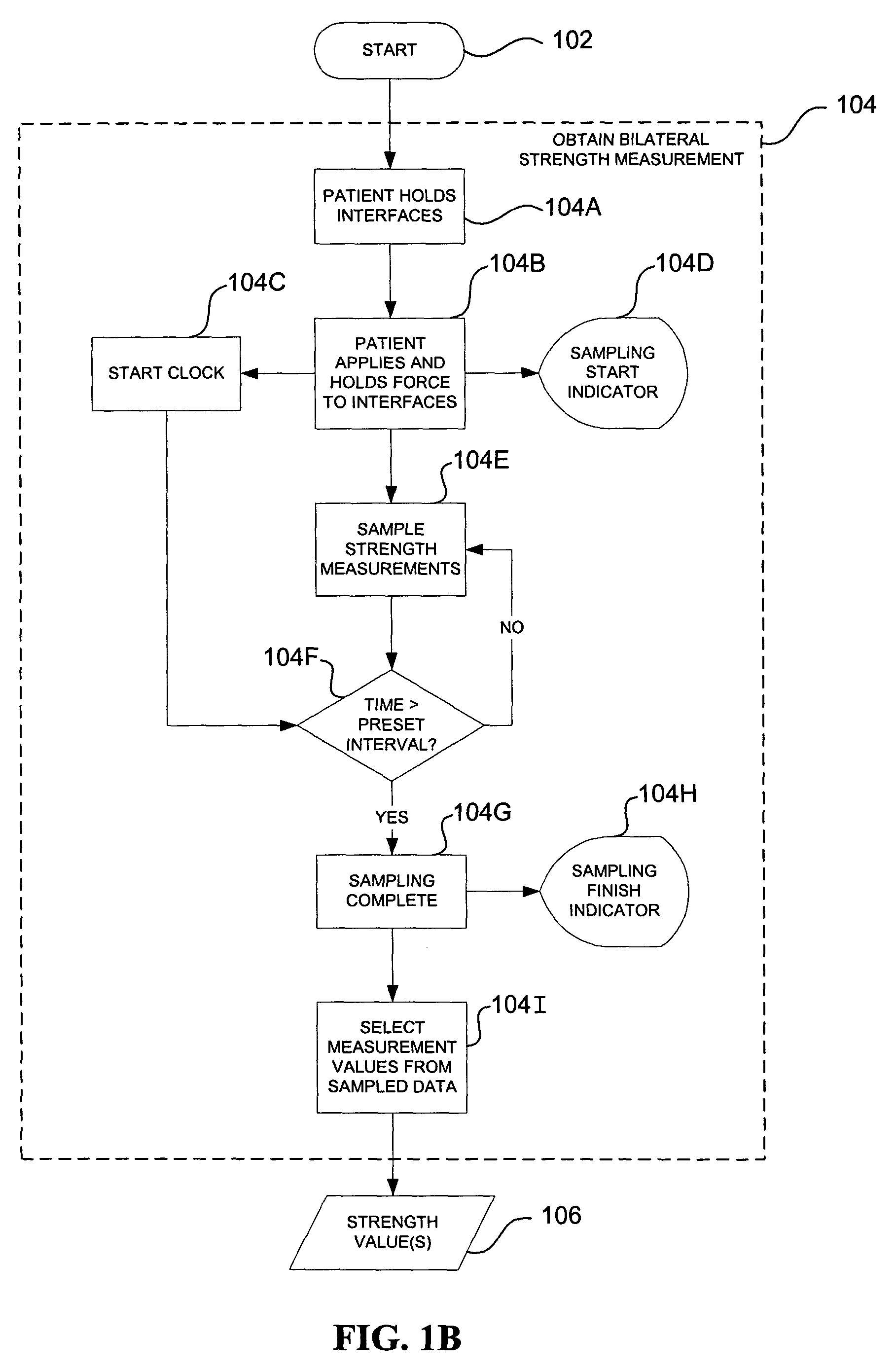Stroke symptom recognition devices and methods
a stroke and recognition device technology, applied in the field of stroke symptom recognition devices and methods, medical devices and methods for diagnosing stroke symptoms, can solve the problems of stroke, stroke is a leading cause of death and disability, muscle weakness, speech impairment, etc., to improve the long-term outcome of patients, quick seek medical attention, and reduce the time for implementation
- Summary
- Abstract
- Description
- Claims
- Application Information
AI Technical Summary
Benefits of technology
Problems solved by technology
Method used
Image
Examples
Embodiment Construction
[0032]The following detailed description should be read with reference to the drawings in which similar elements in different drawings are numbered the same. The drawings, which are not necessarily to scale, depict illustrative embodiments and are not intended to limit the scope of the invention.
[0033]Hemiparesis Detection Devices & Methods
[0034]With reference to FIG. 1A, a method 100 of detecting hemiparesis using a bilateral strength measurement device is shown. In this illustrative method, a bilateral device (not shown) may be utilized to measure strength, such the bilateral device is schematically illustrated in FIG. 3. For purposes of the following description of method 100, the bilateral device generally includes a right side body interface, a left side body interface, and a strength gauge.
[0035]The method starts with step 102, which may correspond to powering on the bilateral device. The interfaces of the bilateral device are connected to the respective right and left sides o...
PUM
 Login to View More
Login to View More Abstract
Description
Claims
Application Information
 Login to View More
Login to View More - R&D
- Intellectual Property
- Life Sciences
- Materials
- Tech Scout
- Unparalleled Data Quality
- Higher Quality Content
- 60% Fewer Hallucinations
Browse by: Latest US Patents, China's latest patents, Technical Efficacy Thesaurus, Application Domain, Technology Topic, Popular Technical Reports.
© 2025 PatSnap. All rights reserved.Legal|Privacy policy|Modern Slavery Act Transparency Statement|Sitemap|About US| Contact US: help@patsnap.com



